Introduction to User-Friendly Website Design and Its Importance

User-friendly website design means creating a website that users can easily and enjoyably use to achieve their goals.
This process goes beyond mere visual aesthetics and involves a deep understanding of user behavior, their needs, and the environment in which they interact with the website.
The importance of a user-friendly website in today’s digital world is undeniable.
Your website should not only provide the necessary information but also offer a smooth, engaging, and effortless experience to convert visitors into customers or encourage them to return.
In fact, user-friendly website design means paying attention to every detail that affects the audience’s experience, from page loading speed to button layout and text readability.
This #educational and #explanatory approach helps you understand the importance of #user_friendliness and #user_experience.
A well-designed website increases user retention, improves conversion rates, and ultimately contributes significantly to your business success.
Ignoring this can lead to high bounce rates, reduced engagement, and lost business opportunities.
Therefore, any business aiming to succeed in today’s competitive online space must prioritize user-friendly website design.
This article will help you learn the fundamental principles and advanced techniques for creating a truly user-friendly website.
Does your current website build the trust that potential customers should have in your business? If the answer is no, it’s time to get your professional and impactful corporate website with Rasav.
✅ Fully customized design tailored to your brand identity
✅ Increased lead generation and business credibility in the eyes of customers⚡ Contact us for a free consultation!
Basic Principles and Key Elements of User Experience
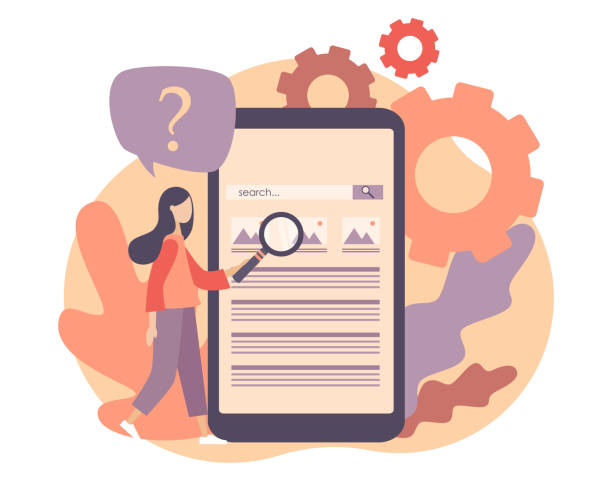
To achieve user-friendly website design, understanding the fundamental principles and key elements of User Experience (UX) is essential.
User Interface (UI) and User Experience (UX) are two inseparable components that together build a successful website.
User interface design relates to the visual and interactive appearance of the website, while user experience design focuses on the user’s feelings when using the website.
Important principles include clarity, consistency, efficiency, and accessibility.
Clarity means that users should easily understand what they can do in each section of the website and where the information is located.
Consistency means that design elements and patterns should be uniform throughout the website to prevent user confusion.
Efficiency relates to minimizing user effort to perform their tasks, and accessibility ensures that the website is usable for everyone, including people with disabilities.
This specialized and guiding approach helps designers lay the foundations of a strong user experience.
Simple and logical navigation, use of clear and understandable language, responsive design for correct display on all devices, and appropriate feedback to user actions are among the key elements that every user-friendly website design should consider.
These are not just basic principles, but the backbone of an interactive and effective website that helps users achieve their goals with minimal challenges.
Psychology of Color and Layout in Website Design
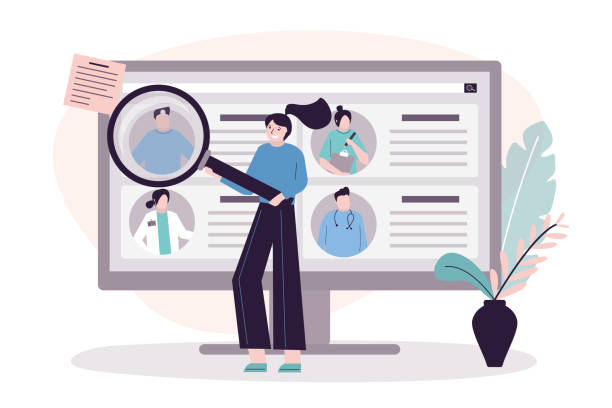
The psychology of color and layout plays a crucial role in user-friendly website design.
Colors not only affect the visual aesthetics of a website but can also subconsciously influence users’ emotions, behaviors, and decisions.
For example, blue typically evokes a sense of trust and calmness, which is why it’s widely used in financial and technology websites.
Green is associated with nature, growth, and freshness, making it suitable for environmental or health-related websites.
Red can signify excitement, energy, or urgency and is often used for “Buy Now” buttons or discounts.
This analytical and specialized section shows you how, by intelligently choosing colors, you can convey a powerful message to your audience and improve their user experience.
In addition to color, the layout and visual design of the website are also very important.
A layout that presents information hierarchically and organized helps the user easily find what they are looking for.
Whitespace helps improve readability and makes key elements stand out more.
Using familiar and predictable design patterns also makes users feel more comfortable.
Considering the psychology of color and layout allows you to design a user-friendly website yet effective website that is not only beautiful but also positively impacts your business goals.
| Color | Common Meanings | Example Application in Website |
|---|---|---|
| Blue | Trust, Calmness, Stability, Intelligence | Banking, Technology, Health Websites |
| Green | Nature, Growth, Health, Serenity | Environmental, Organic, Health Websites |
| Red | Energy, Excitement, Urgency, Love | “Buy Now” buttons, Discounts, Warnings |
| Yellow | Cheerfulness, Optimism, Alertness, Creativity | Entertainment, Children’s Websites, Attention Buttons |
| Black | Luxury, Power, Sophistication, Modernity | Fashion, Luxury Cars, Art Websites |
Loading Speed and Website Performance Optimization
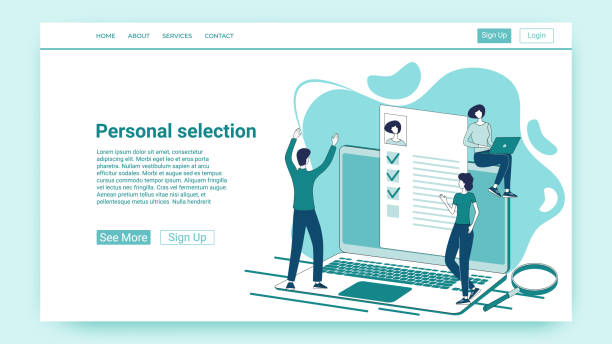
Website loading speed is one of the most crucial factors in user-friendly website design.
Today’s users are accustomed to speed, and no one wants to wait several seconds for a web page to load.
Studies have shown that even a one-second delay in page loading time can lead to a significant decrease in conversion rates and an increase in bounce rates.
Google and other search engines also consider site speed a critical ranking factor, so optimizing speed is vital not only for users but also for SEO.
This specialized and guiding section delves into some key techniques for improving loading speed.
Compressing images without losing quality, using browser caching, optimizing CSS and JavaScript codes, and choosing a reliable and fast hosting provider are among the fundamental steps.
Additionally, using Content Delivery Networks (CDNs) can help reduce loading times for users in different geographic regions.
Reducing HTTP requests, optimizing the database, and removing unnecessary plugins and scripts can also significantly impact performance.
Ultimately, a user-friendly website design must ensure that users can quickly access the information they need without encountering annoying delays.
This helps maintain user satisfaction and encourages further interaction.
Does your current website display your brand’s credibility as it should? Or does it drive away potential customers?
Rasav, with years of experience in designing professional corporate websites, is your comprehensive solution.
✅ A modern, beautiful, and brand-identity-aligned website
✅ Significant increase in lead and new customer acquisition
⚡ Contact Rasav now for a free corporate website design consultation!
Engaging Content and Its Role in User Interaction
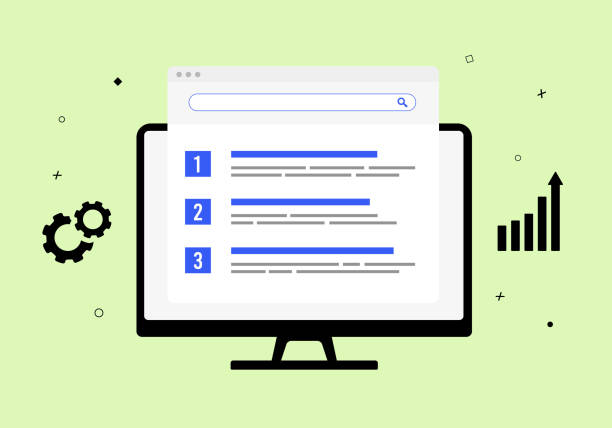
Content is king; this phrase holds special importance in user-friendly website design.
Engaging, relevant, and high-quality content can attract users to your site and encourage them to stay and interact more.
A website with good content not only provides the information a user needs but also challenges, entertains, and even inspires them.
This questioning and entertaining content approach goes beyond merely writing text and includes using high-quality images, videos, infographics, and other visual formats.
Your content should be readable and scannable.
Using clear headings, short paragraphs, bullet points, and sufficient white space makes text easier for the user to read.
Also, the tone of writing should align with your target audience and brand.
Do you want a formal and informative tone or a friendly and conversational one? This choice significantly impacts your relationship with the user.
A user-friendly website design that focuses on excellent content naturally increases user engagement.
Creating clear and attractive Calls-to-Action, encouraging users to share content on social media, and allowing comments or questions all help increase user participation.
Up-to-date and fresh content is not only attractive to users but also sends a positive signal to search engines and helps with website SEO.
Remember, your content should be valuable and answer users’ questions so they feel their time on your website has been well spent.
Usability Testing and Feedback Collection

User-friendly website design is not a static process, but a continuous cycle of design, implementation, testing, and optimization.
Usability Testing and gathering feedback from real users are crucial steps to ensure your website is truly user-friendly.
This analytical and educational approach helps you discover the strengths and weaknesses of your design from the users’ perspective.
There are various methods for usability testing, including Moderated Tests where an observer interacts with the user, and Unmoderated Tests where users perform tasks independently.
Tools such as Heatmaps and user session recordings can also be used to observe their behavior on the website.
User feedback can be collected through surveys, contact forms, comment sections, and even social media.
The importance of this feedback lies in that it provides real and practical insights into how users interact with your site.
For example, you might find that users have trouble finding the “Add to Cart” button, or your registration form is too long and tedious.
By analyzing this data, you can implement necessary changes to improve the user experience.
Ultimately, the goal of testing and gathering feedback is to transform a user-friendly website design into a more user-friendly and effective website that meets user needs and advances your business goals.
Responsive Design and Mobile-Friendliness

In the current era, where the use of smartphones and tablets for internet access is increasing, responsive design and mobile-friendliness of a website are of vital importance.
A user-friendly website design must ensure that the website is displayed correctly across all screen sizes, from large desktops to small mobile phones, and maintains its functionality.
Responsive design means that your website automatically adapts its layout and content to the user’s screen dimensions.
This not only improves the user experience but is also important for SEO, as Google prioritizes mobile-friendly websites in search results.
This specialized and guiding section addresses the importance of this approach in user-friendly website design.
Elements such as flexible images, fluid grids, and CSS media queries are key tools for achieving responsive design.
Additionally, attention must be paid to font sizes, line spacing, button and form sizes to ensure they are easily tappable and usable for mobile users.
Mobile users are often in a hurry and looking for quick access to information, so simple navigation, fast loading times, and mobile-optimized content are essential.
A mobile user-friendly website helps you target a wider audience and provide a positive experience for all users, regardless of the device they use.
| Device Type | Approximate Width (pixels) | Design Goal |
|---|---|---|
| Small Mobile | Up to 320px | Essential content, simple navigation |
| Medium Mobile | 321px – 480px | Optimization for readability and touch |
| Vertical Tablet | 481px – 768px | Two-column layout, larger elements |
| Horizontal Tablet | 769px – 1024px | Near-desktop layout, full menus |
| Desktop | 1025px and up | Full layout, more details |
Security and Privacy in Web Design
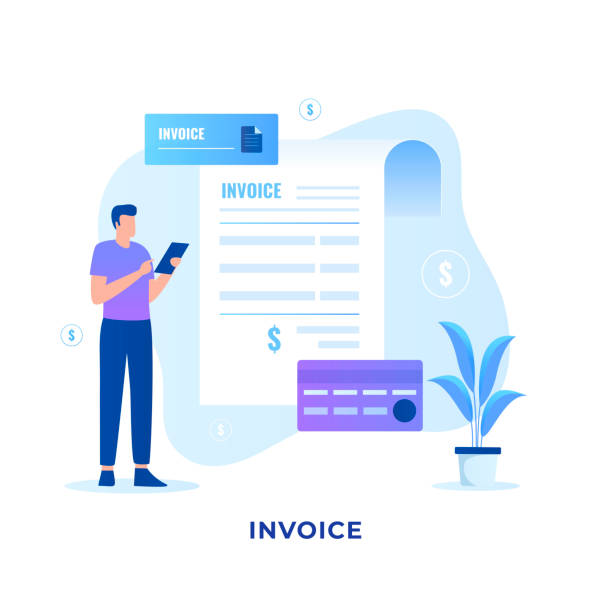
Security and privacy are two important pillars in user-friendly website design that build user trust.
In today’s world, where cyber threats are increasing, every website, from a simple blog to a large online store, must take sufficient security measures to protect user data and prevent malicious attacks.
This news and explanatory section shows you how user-friendly website design is intertwined with security.
Using the HTTPS protocol (with SSL/TLS certificate), which encrypts communications between the user’s browser and the website server, is a fundamental requirement.
This is not only essential for data security but also has a positive impact on SEO.
Furthermore, proper user password management, input validation to prevent code injection attacks, and regular updates of the Content Management System (CMS) and plugins are other vital security measures.
Also, transparency regarding how user data is collected, used, and stored (privacy policy) is crucial for building trust and complying with regulations like GDPR.
Users should feel that their personal information on your website is secure and will not be misused.
A user-friendly website not only means ease of use but also means creating a secure and trustworthy environment for digital interactions.
Ignoring security can lead to loss of user trust, damage to brand reputation, and even legal consequences.
Are you dissatisfied with the low conversion rate of visitors to customers on your e-commerce site?
Solve this problem forever with professional e-commerce website design by Rasav!
✅ Increased visitor-to-customer conversion rate
✅ Creating an excellent user experience and building customer trust
⚡ Get a free consultation
The Future of Website Design and New Trends

The world of user-friendly website design is rapidly evolving, with new trends constantly emerging to improve the user experience.
This analytical and news section examines some of these emerging trends that will play a significant role in the future of user-friendly website design.
One of the most important is Artificial Intelligence (AI) and machine learning, which enable websites to personalize the user experience.
From product recommendations based on user behavior to intelligent chatbots for customer support, AI is changing how we interact with websites.
Voice User Interfaces (Voice UI) have also gained increasing importance with the rise of smart assistants like Siri and Alexa.
Designers must optimize websites to be suitable for voice searches and screen-less interactions.
Furthermore, Augmented Reality (AR) and Virtual Reality (VR) are entering the web world and can offer new immersive and interactive experiences, especially in areas like online shopping and education.
Microinteractions – small animations and feedback that occur in response to user actions – also help improve the user’s visual and emotional experience.
Ultimately, the future of user-friendly website design is moving towards being increasingly predictive, personalized, and beyond the screen.
Given these trends, designers and developers must continuously update their knowledge to build websites that are not only contemporary but also ready for future challenges.
Conclusion and Final Tips for Successful Website Design

In this article, we discussed various aspects of user-friendly website design and its importance in the online success of businesses.
From basic UX principles and color psychology to loading speed, engaging content, usability testing, responsive design, security, and future trends, each section demonstrated how a user-friendly website is the result of attention to detail and a deep understanding of user needs.
This guiding and educational final section summarizes the key points for designing a successful website.
Always place the user at the center of your design.
Before every decision, ask yourself: “How will this change affect the user experience?” User-friendly website design means continuous improvement.
Markets, technologies, and user expectations are constantly changing.
Therefore, your website must be continuously updated and optimized.
Take user feedback seriously and use it for continuous improvement.
Don’t forget that speed, security, and accessibility are the foundations upon which every excellent website is built.
Your content should be valuable and engaging to retain users and give them a reason to return.
Ultimately, a strong user-friendly website design can help you build a reputable brand, increase conversion rates, and achieve your business goals.
This is an investment that will yield significant returns in the long run and differentiate you from your competitors.
By adhering to these principles, you can build a website that is not only beautiful but also powerful and influential.
Frequently Asked Questions
And other services of Rasav Advertising Agency in the field of advertising
Smart Digital Branding: A quick and efficient solution for increasing website traffic with a focus on intelligent data analysis.
Smart Custom Software: Designed for businesses looking to increase click-through rates through SEO-driven content strategy.
Smart Data Analysis: A quick and efficient solution for campaign management with a focus on marketing automation.
Smart Advertorials: A dedicated service for digital branding growth based on Google Ads management.
Smart Data Analysis: A novel service for improving SEO ranking through engaging UI design.
And over hundreds of other services in internet advertising, advertising consultation, and organizational solutions
Internet Advertising | Advertising Strategy | Advertorial
Resources
User-Friendly Website Design Principles
What is User Experience and Why is it Important?
What is UX/UI Website Design?
What is User Experience (UX) Optimization?
? Transform your business in the digital world with Rasav Afarin Digital Marketing Agency. We pave your path to success by offering comprehensive services including website design with a modern user interface, professional SEO, and social media management.
📍 Tehran, Mirdamad Street, next to Bank Markazi, Kazerun Jonubi Alley, Ramin Alley, No. 6



